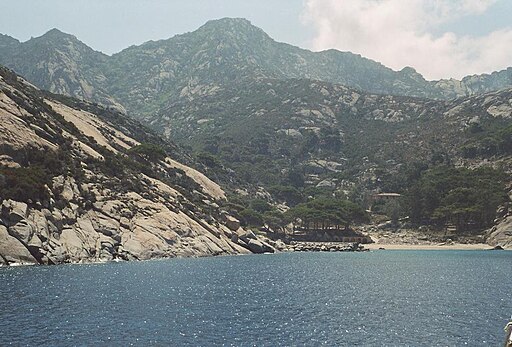The island of Montecristo and Mamilian of Palermo
|
Montecristo was made famous by the French novelist Alexandre Dumas in his classic The Count of Monte Cristo, a story of revenge, honour and buried treasure.
|
 |
Il duomo di Sovana, tomba di San Mamiliano [1]
|
Saint Mamilian (Mamilianus) of Palermo, who is venerated with Nympha (Ninfa), Eustotius (Eustozio), Proculus (Proculo, Procuro), and Golbodeus (Golbodeo, Golbudeo), was a bishop of Palermo of the fifth century.[1] Mamilian lived in Sicily at a time when the Vandals dominated the island.[1] He served as bishop of Palermo but was exiled to Africa by the Vandals, who adhered to Arianism, around 450 AD with some Christian companions.[1] One source states that Mamilian was exiled to Tuscany by Genseric, the Vandal king.[2] However, through the intercession of an African bishop or by some sympathetic Christians, he escaped to Sardinia.[1] After that, he spent time on the island of Montecristo. According to a legend on Montecristo, Mamilian defeated a dragon on the island, and also changed the island’s name from Montegiove ("Jove's Mountain") to Montecristo ("Christ's Mountain").[3] A community of hermits, said to have been Mamilian’s followers, lived on the island, and around 600 AD, a monastery was built.[3] He subsequently went also to the island of Giglio, where he died.[1] Golbodeus’s name may a be a corruption of Quodvultdeus, a name shared by another 5th-century saint.[4]
Veneration Some sources say Mamilian's relics were translated to Rome, to the Church of Santa Maria in Monticelli, and subsequently to Spoleto.[1] Some of his relics may have been taken to Palermo.[2] Another tradition states that Cosimo III de' Medici, Grand Duke of Tuscany returned Mamilian’s entire body to Giglio in the 17th century.[5] On the island of Giglio, celebrations dedicated to Saint Mamilian start on September 15 and last for four days, consisting of a process of his relics (Mamilian’s arm), games, music, and a traditional mass.[5] In 1673, Archbishop Juan Lozano of Palermo erected statues to Mamilian, Eustotius, Proculus, and Golbodeus in the cathedral of Palermo.[6] The statues were made by Travaglia (Mamilian, Golbodeus) and Antonio Anello (Eustotius, Proculus).[6]
|
|
 |
 |
|||
Ruins of the Monastery of San Mamiliano [2]
|
Grotta di San Mamiliano on Montecristo | La spiaggia di Cala Maestra | ||
|
||||


